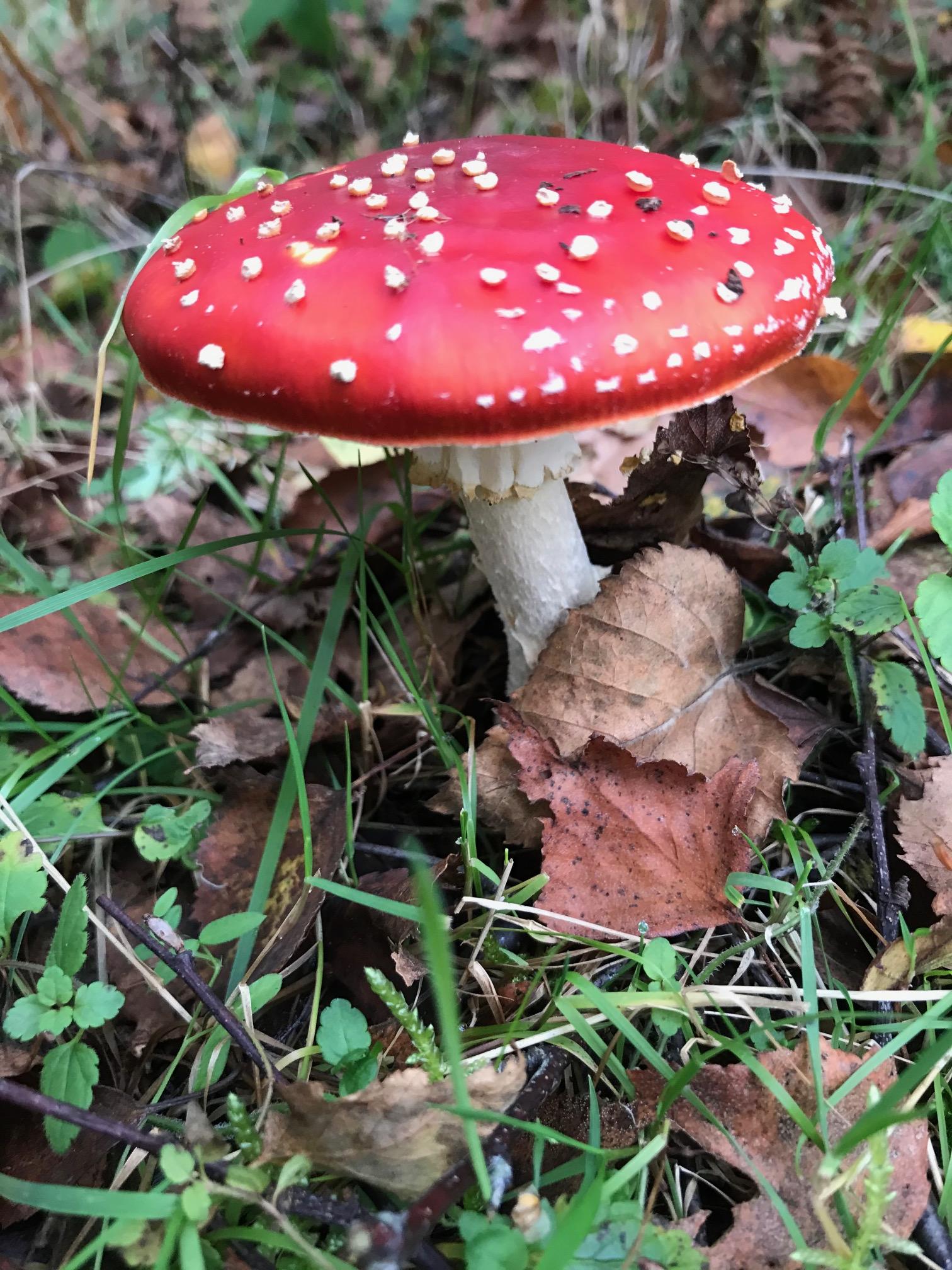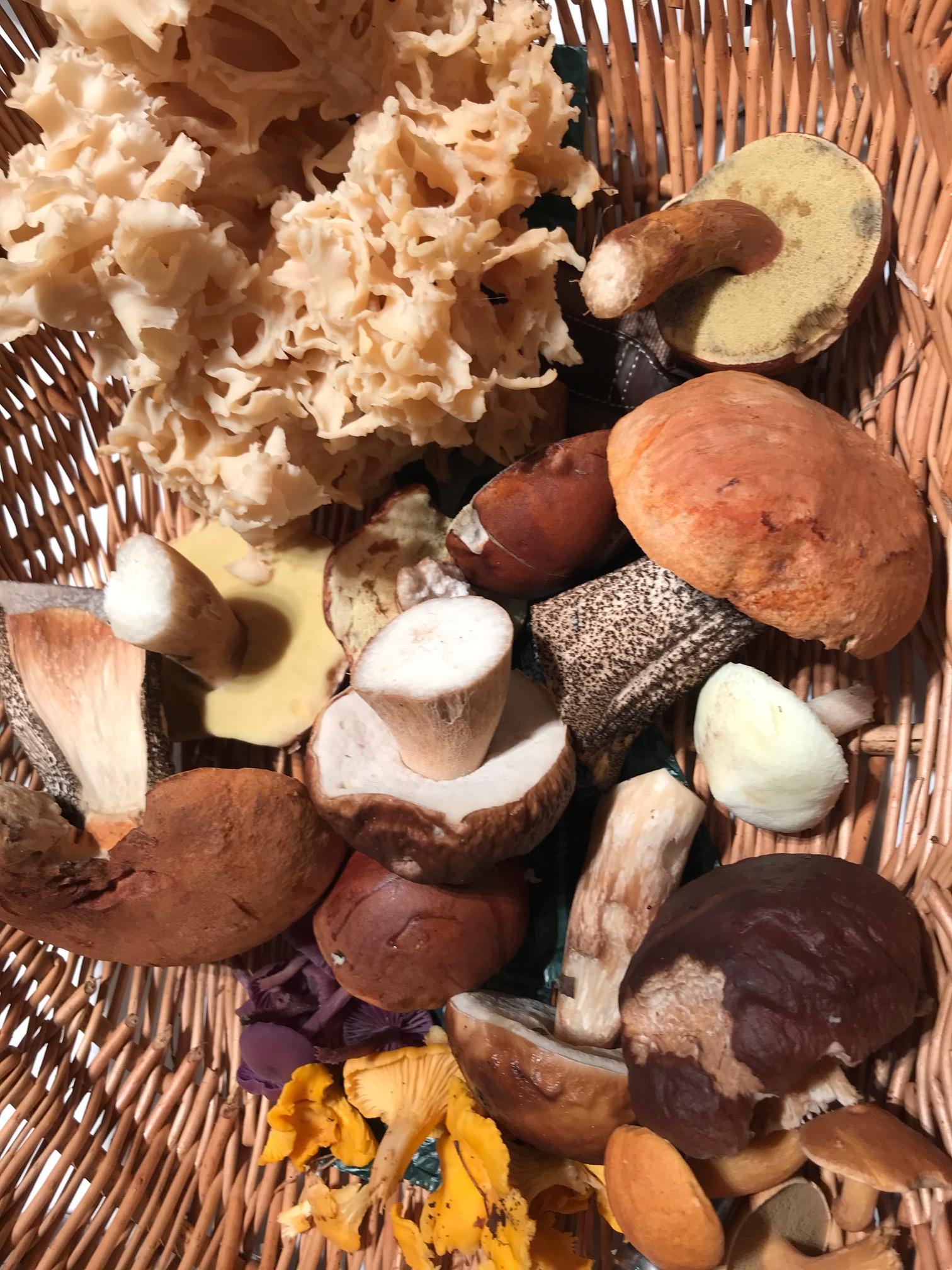Foraging for wild fungi - starting out as a beginner
Autumn is the season where so many of us notice the fungi around us with every walk in the countryside. There are the traditional "piskie" mushrooms that are so familiar to us from childhood fairy stories - the stunningly beautiful Fly agaric (Amanita muscaria) being chief amongst those. "Oo, those are poisonous" is the phrase that so often follows these iconic mushrooms being spotted. But are these red and white beauties are bad as people say?

Finding edible fungi in the wild is such fun, like finding hidden, deliciously edible treasure, but most people are rightly wary of the chance of poisoning themselves. There are some mushrooms that are deadly and it is important to be aware of the risk. So how to make it safe?
The MOST important factors that make foraging safe is good knowledge and the constant mantra of "if you are not 100% sure of which fungi you have picked then do not eat it". Good field guides, like the "Collins Complete Guide to British Mushrooms and Toadstools", are essential for identifying one species of fungi from another but often these books don't tell you which fungi are edible. So in addition, you will need a book about foraging which will tell you which fungi are edible, how to recognise them, what they taste like and how to cook them. The "River Cottage Mushrooms" book by John Wright is an excellent option although there are several other books that are brilliant, e.g. "Wild Food" by Roger Phillips. You will need both sorts of books to have all the information you need to identify edible fungi and how to cook them.
The very best way of learning about foraging for edible fungi is to go on a local foraging course. You will learn about the mushrooms that grow near where you live, the sorts of habitats where you will find them, handy identification tips so you can be sure you are picking something safely edible. You will also learn about fungi that look like edible ones so that you can tell the edible ones from the non-edible ones. These courses are great fun and you will leave with the confidence to pick a few easily identified edible fungi so that you can be 100% sure they are safe.

There are quite a few professional foraging leaders across the country and they can be found online or via social media. The Association of Foragers also has listings of a number of foraging course leaders by area.
So why not take those first steps in discovering the fun world of foraging?
www.wildseasonsforaging.co.uk

Finding edible fungi in the wild is such fun, like finding hidden, deliciously edible treasure, but most people are rightly wary of the chance of poisoning themselves. There are some mushrooms that are deadly and it is important to be aware of the risk. So how to make it safe?
The MOST important factors that make foraging safe is good knowledge and the constant mantra of "if you are not 100% sure of which fungi you have picked then do not eat it". Good field guides, like the "Collins Complete Guide to British Mushrooms and Toadstools", are essential for identifying one species of fungi from another but often these books don't tell you which fungi are edible. So in addition, you will need a book about foraging which will tell you which fungi are edible, how to recognise them, what they taste like and how to cook them. The "River Cottage Mushrooms" book by John Wright is an excellent option although there are several other books that are brilliant, e.g. "Wild Food" by Roger Phillips. You will need both sorts of books to have all the information you need to identify edible fungi and how to cook them.
The very best way of learning about foraging for edible fungi is to go on a local foraging course. You will learn about the mushrooms that grow near where you live, the sorts of habitats where you will find them, handy identification tips so you can be sure you are picking something safely edible. You will also learn about fungi that look like edible ones so that you can tell the edible ones from the non-edible ones. These courses are great fun and you will leave with the confidence to pick a few easily identified edible fungi so that you can be 100% sure they are safe.

There are quite a few professional foraging leaders across the country and they can be found online or via social media. The Association of Foragers also has listings of a number of foraging course leaders by area.
So why not take those first steps in discovering the fun world of foraging?
www.wildseasonsforaging.co.uk
